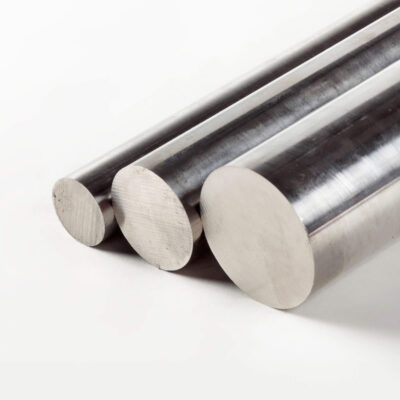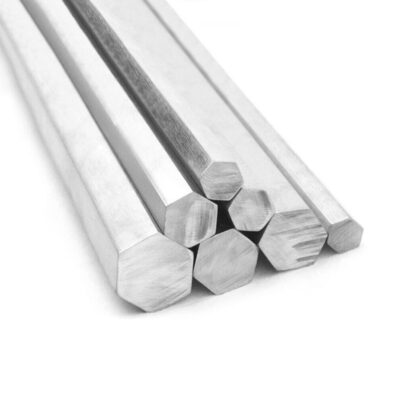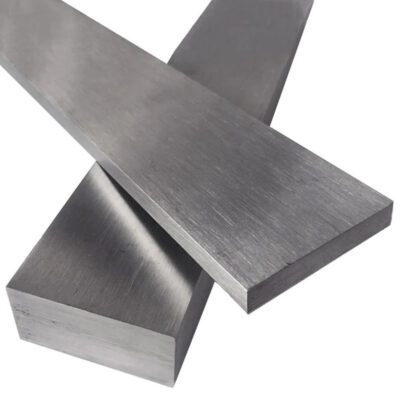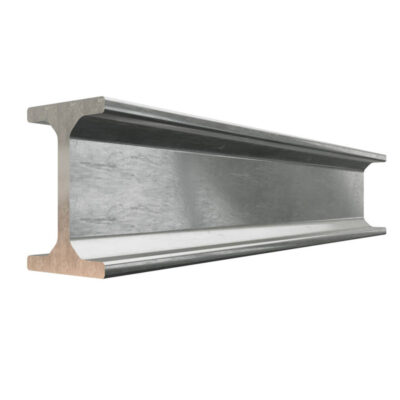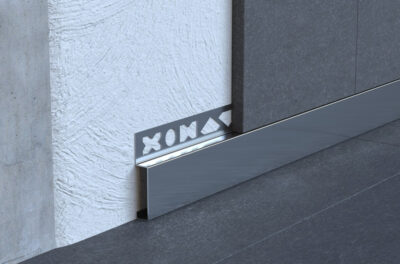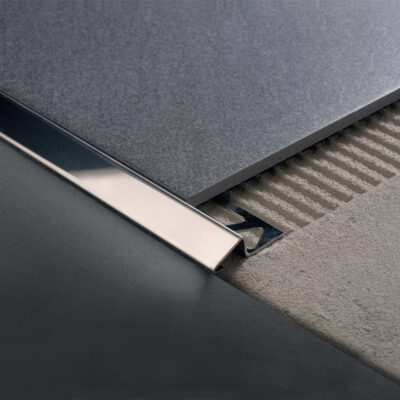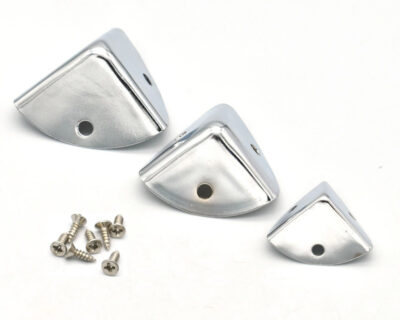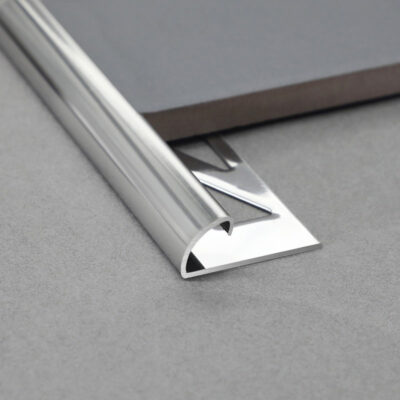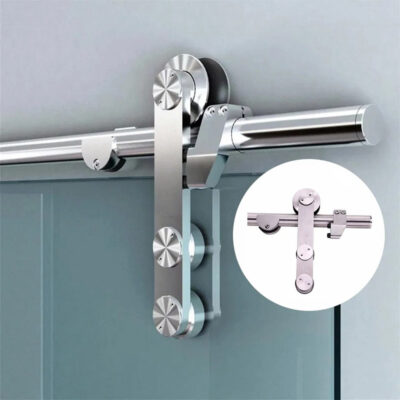The Evolution of Stainless Steel in Automotive Manufacturing
The relationship between stainless steel and automobiles dates back nearly a century, yet it continues to evolve in fascinating ways. In the early days of automotive manufacturing, vehicles were primarily constructed using carbon steel, which offered adequate strength but proved vulnerable to corrosion. The introduction of stainless steel represented a significant breakthrough, though initially limited to decorative elements due to cost constraints.
I remember walking through an automotive museum where a pristine 1936 Ford Deluxe was on display—its stainless steel trim gleaming as if it had been manufactured yesterday. That moment crystallized for me how dramatically this material had changed the industry’s approach to durability and design.
By the mid-20th century, automotive engineers began recognizing broader applications beyond mere aesthetics. Exhaust systems were among the first functional components to widely adopt stainless steel, primarily due to the material’s exceptional resistance to high temperatures and corrosive exhaust gases. This shift wasn’t merely incremental—it revolutionized vehicle longevity and reliability.
Today’s vehicles incorporate E-Sang and other manufacturers’ stainless steel in increasingly sophisticated ways. Modern automotive stainless steel has become integral to structural components, safety systems, and even powertrain elements. The material’s versatility continues to expand as metallurgists develop specialized grades tailored to specific automotive applications.
The progression hasn’t been solely about functionality. As consumer expectations evolved, so did the role of stainless steel in communicating quality and premium status. From the radical stainless steel body of the DeLorean DMC-12 to the subtle accents on today’s luxury vehicles, this material has become a signifier of craftsmanship and attention to detail.
What’s particularly intriguing about this evolution is how automotive stainless steel has adapted to changing manufacturing paradigms. When mass production demanded ever-greater efficiencies, steel producers responded with grades that offered improved formability. As vehicle lightweighting became crucial for fuel economy, thinner-gauge options with enhanced strength properties emerged.
Key Properties of Automotive-Grade Stainless Steel
Automotive stainless steel distinguishes itself through a combination of properties that few alternative materials can match. At its core, the corrosion resistance stems from the chromium content—typically at least 10.5% by weight—which forms a self-healing passive oxide layer upon exposure to oxygen. This characteristic becomes especially valuable in harsh operating environments where road salt, moisture, and temperature fluctuations would quickly degrade conventional materials.
During a conversation with Dr. Wei Zhang, a metallurgical engineer specializing in automotive materials, she emphasized that modern vehicles demand far more from their materials than simple corrosion protection. “Today’s automotive stainless steel must balance multiple competing properties—formability for complex geometries, strength for crash performance, and increasingly, magnetic characteristics for sensor compatibility in automated driving systems,” she explained.
The mechanical properties vary significantly across different stainless steel grades. Austenitic stainless steels typically offer excellent ductility and work-hardening capabilities, making them ideal for complex-shaped components that require energy absorption. Testing has shown that certain grades can achieve tensile strengths exceeding 1500 MPa after cold working, rivaling even some advanced high-strength steels while maintaining superior corrosion resistance.
Heat resistance represents another crucial property domain. Exhaust components routinely operate at temperatures exceeding 800°C while experiencing rapid thermal cycling. Under these conditions, the microstructural stability of specialized grades like 409 and 439 prevents scaling and distortion that would render conventional materials unusable after relatively short service periods.
The following table illustrates key property comparisons between common automotive stainless steel grades:
| Property | Type 304 (Austenitic) | Type 409 (Ferritic) | Type 410 (Martensitic) | High-Strength Duplex |
|---|---|---|---|---|
| Tensile Strength | 515-620 MPa | 380-450 MPa | 450-700 MPa | 700-950 MPa |
| Yield Strength | 205-310 MPa | 170-275 MPa | 275-550 MPa | 450-700 MPa |
| Corrosion Resistance | Excellent | Moderate | Moderate | High |
| Formability | Excellent | Good | Limited | Moderate |
| Magnetic Properties | Non-magnetic | Magnetic | Magnetic | Partially magnetic |
| Typical Applications | Trim, Fasteners, Fuel tanks | Exhaust systems | Valve components | Structural parts |
| Cost Factor | Higher | Lower | Moderate | Highest |
What’s often overlooked is how the surface finish affects both functional and aesthetic performance. Automotive stainless steel can be produced with diverse finishes—from mirror-like bright annealing to textured matte surfaces that minimize fingerprint visibility. The finish selection impacts not just appearance but also dirt adhesion, cleanability, and even aerodynamic properties in external applications.
Weight considerations remain a persistent challenge. Despite advancements in high-strength grades that allow thinner material usage, stainless steel typically imposes a weight penalty compared to aluminum alternatives. That said, recent developments in advanced high-strength stainless grades have narrowed this gap while offering compensatory benefits in durability and total lifecycle costs.
Types of Stainless Steel Used in Automotive Applications
The diversity of stainless steel types employed in modern vehicles reflects the wide-ranging demands of automotive engineering. Each family of stainless steel brings distinct advantages to specific applications, creating a complex material selection landscape that requires careful consideration.
Austenitic stainless steels, particularly the 300 series, have traditionally dominated applications where extreme formability and superior corrosion resistance are paramount. Type 304, containing approximately 18% chromium and 8% nickel, serves as the workhorse for components like fuel tanks, trim elements, and fasteners. Its exceptional ductility allows manufacturers to create complex shapes without cracking or excessive thinning during deep drawing operations.
During a facility tour at a major automotive supplier, I watched as massive sheets of 304L stainless transformed into intricate fuel tank assemblies. The material flowed almost like plastic under the precision hydraulic presses, maintaining its integrity even at extreme deformation rates—a property that becomes particularly valuable in safety-critical components.
Ferritic stainless steels, especially types 409 and 439 from the 400 series, have become the standard for exhaust system components. Their chromium content (typically 10.5-18%) provides adequate corrosion protection while their lower cost (due to minimal or absent nickel content) makes them economically viable for larger components. Moreover, their superior thermal properties—including lower thermal expansion and better resistance to thermal cycling—make them ideal for exhaust manifolds, catalytic converter housings, and mufflers.
A comparison of the most common automotive stainless steel alloys reveals their specialized nature:
| Stainless Steel Type | Chromium (%) | Nickel (%) | Key Advantages | Primary Automotive Applications | Relative Cost |
|---|---|---|---|---|---|
| 304/304L (Austenitic) | 18-20 | 8-10.5 | Excellent corrosion resistance, High formability, Non-magnetic | Trim components, Fuel system parts, Fasteners | ★★★☆☆ |
| 316/316L (Austenitic) | 16-18 | 10-14 | Superior corrosion resistance, Molybdenum content for salt resistance | Marine applications, Coastal environment vehicles, Luxury trim | ★★★★☆ |
| 409 (Ferritic) | 10.5-11.75 | 0.5 max | Cost-effective, Good oxidation resistance, Moderate formability | Exhaust manifolds, Catalytic converters | ★★☆☆☆ |
| 439 (Ferritic) | 17-19 | 0.5 max | Improved corrosion resistance over 409, Better heat resistance | Premium exhaust systems, Heat shields | ★★★☆☆ |
| 410 (Martensitic) | 11.5-13.5 | 0.75 max | Heat treatable, High strength, Wear resistance | Valve components, Springs, Bearing assemblies | ★★★☆☆ |
| Duplex (e.g., 2205) | 22-23 | 4.5-6.5 | Very high strength, Good corrosion resistance | Structural components, Safety-critical parts | ★★★★★ |
Martensitic stainless steels occupy a specialized niche in automotive applications. The ability to heat treat these alloys to high hardness levels makes them valuable for components requiring wear resistance and strength, such as valve stems, bearing components, and high-stress fasteners. Type 410, containing approximately 12% chromium, strikes a balance between reasonable corrosion protection and mechanical properties that can be tailored through heat treatment.
Precipitation-hardening stainless steels like 17-4 PH represent the cutting edge for high-performance applications. These grades can achieve exceptional strength through aging treatments while maintaining good corrosion resistance. Though their complex processing requirements limit widespread adoption, they’ve found applications in high-stress components for performance vehicles where conventional materials would fail under extreme conditions.
Duplex stainless steels, with their mixed austenitic-ferritic microstructure, offer an intriguing combination of strength and corrosion resistance. According to materials scientist Dr. Javier Rodriguez, “Duplex grades like 2205 provide nearly twice the yield strength of austenitic stainless while maintaining excellent corrosion performance. This makes them particularly valuable for structural applications where weight reduction through thinner sections becomes possible.”
The emergence of specialty automotive stainless steel grades continues to accelerate, with manufacturers developing proprietary compositions targeting specific performance attributes. These custom alloys often feature carefully balanced additions of elements like molybdenum, copper, or nitrogen to enhance particular properties while minimizing cost impact.
Critical Automotive Components Made from Stainless Steel
The strategic deployment of stainless steel throughout modern vehicles reveals much about its versatile performance characteristics. From highly visible exterior elements to hidden functional components, automotive stainless steel has established itself as indispensable in numerous critical applications.
Exhaust systems represent perhaps the most extensive use case, with multiple components leveraging stainless steel’s unique properties. Starting at the exhaust manifold, where temperatures can exceed 850°C during peak operation, heat-resistant grades like 409 and 439 prevent warping and cracking that would quickly compromise conventional materials. These ferritic stainless steels, with their carefully calibrated chromium content, maintain structural integrity while resisting the highly corrosive combination of combustion byproducts and condensed water vapor.
The catalytic converter housing presents an even more challenging environment. Here, not only must the material withstand extreme temperatures, but it must also maintain dimensional stability to prevent damage to the delicate ceramic substrate within. According to a performance study conducted by the Society of Automotive Engineers, properly specified stainless steel housings can extend catalytic converter lifespan by up to 60% compared to aluminized steel alternatives, particularly in regions with aggressive road salt usage.
Moving through the exhaust system, we find:
- Flexible joints that accommodate engine movement and thermal expansion
- Intermediate pipes exposed to road splash and debris
- Muffler assemblies that must resist both internal and external corrosion
- Tailpipe tips that combine aesthetic requirements with resistance to exhaust condensates
Beyond exhaust applications, fuel system components frequently incorporate stainless steel construction. Fuel tanks benefit from the material’s compatibility with modern fuel blends containing varying levels of ethanol and other additives that might degrade alternative materials. The superior formability of austenitic grades allows for complex tank geometries that maximize capacity while conforming to limited packaging space.
This became particularly evident during a project I consulted on, where a fuel tank redesign required integrating complex internal baffles to prevent sloshing. The 316L stainless specified allowed for remarkably intricate stamping operations that would have been impossible with most alternative materials. The resulting component not only met all functional requirements but also exceeded durability targets in accelerated corrosion testing.
Structural applications represent a growing frontier for automotive stainless steel. High-strength grades, particularly duplex stainless steels, enable weight reduction through thinner gauges while maintaining critical crash performance. These applications typically focus on areas with elevated corrosion exposure or those requiring specific energy absorption characteristics.
The following table outlines key stainless steel applications by vehicle system:
| Vehicle System | Components | Primary Stainless Steel Types | Key Performance Requirements |
|---|---|---|---|
| Exhaust | Manifolds, Catalytic converters, Pipes, Mufflers, Tips | 409, 439, 441, 304 | High-temperature resistance (800°C+), Corrosion resistance, Vibration durability |
| Fuel System | Tanks, Fuel lines, Filler necks, Fuel rails | 304L, 316L | Chemical compatibility, Formability, Weldability, Leak prevention |
| Chassis & Structure | Suspension components, Safety-critical members, Roll cages (performance vehicles) | Duplex grades, 301, High-strength variants | Strength-to-weight ratio, Impact energy absorption, Fatigue resistance |
| Powertrain | Valve components, Turbocharger parts, EGR systems, Springs | 410, 17-4PH, Heat-resistant grades | Wear resistance, High-temperature strength, Dimensional stability |
| Body & Trim | Decorative moldings, Grilles, Window surrounds, Body panels (specialty vehicles) | 304, 316, 430 | Surface finish quality, Formability, Weather resistance, UV stability |
Interior applications, though less common, take advantage of stainless steel’s hygienic properties and premium appearance. High-touch surfaces like steering wheel spokes, shifter components, and control knobs in luxury vehicles often incorporate stainless finishes that resist wear and maintain their appearance throughout the vehicle’s lifespan.
Electric vehicles (EVs) have introduced novel applications for automotive stainless steel. Battery enclosures benefit from the material’s fire resistance and electromagnetic shielding properties, while high-strength grades contribute to the enhanced crash structures often required to protect battery systems. The cooling systems for batteries and power electronics similarly leverage stainless steel’s corrosion resistance in environments where multiple metals might otherwise create galvanic corrosion issues.
A less visible but equally important application involves fasteners and attachment hardware. Here, stainless steel’s combination of strength and corrosion resistance ensures structural integrity throughout the vehicle’s service life, particularly in areas exposed to moisture or temperature fluctuations that would compromise standard fasteners.
Sustainability Aspects of Stainless Steel in the Automotive Industry
The environmental implications of material choices have become increasingly central to automotive engineering decisions. Stainless steel occupies an intriguing position in this landscape, offering both challenges and opportunities from a sustainability perspective.
Recyclability stands as perhaps the most significant environmental advantage of automotive stainless steel. Unlike many alternative materials, stainless can be recycled repeatedly without degradation of its essential properties. Current industry statistics indicate that approximately 85% of stainless steel from end-of-life vehicles is successfully recovered and reprocessed, contributing to a circular material flow that reduces primary resource extraction.
Environmental consultant Dr. Elena Martinez points out that “the high intrinsic value of stainless steel creates strong economic incentives for recovery, resulting in recycling rates far exceeding those of most automotive materials.” This value derives primarily from the nickel, chromium, and molybdenum content, which remain fully recoverable through modern recycling processes.
The energy embodied in stainless steel production represents a more complex consideration. Primary production is energy-intensive, requiring approximately 50-60 GJ per tonne—significantly higher than conventional carbon steel. However, this energy investment must be evaluated against the material’s extended service life and full lifecycle benefits. When manufactured using electric arc furnace technology with a high percentage of recycled content (now exceeding 60% globally for stainless production), the carbon footprint improves considerably.
A comprehensive life cycle analysis conducted by the International Stainless Steel Forum found that:
- Vehicles with stainless steel components typically demonstrate extended service life
- Maintenance requirements (including anti-corrosion treatments) decrease significantly
- End-of-life recycling offsets a substantial portion of initial production impacts
- Total lifecycle emissions can be lower than alternatives requiring replacement or extensive maintenance
Weight considerations present the most significant environmental challenge. Despite advancements in high-strength grades that permit thinner gauges, stainless steel components typically weigh more than aluminum alternatives. This weight penalty translates directly to increased fuel consumption during the use phase—traditionally the dominant contributor to lifetime vehicle emissions.
However, this calculus has begun shifting with the transition toward electric vehicles. In EVs, where operational emissions derive from the electricity mix rather than direct fuel combustion, the manufacturing phase represents a larger portion of lifetime environmental impact. Here, stainless steel’s recyclability and durability become more significant factors in total lifecycle assessment.
The following table compares sustainability aspects of automotive stainless steel against common alternatives:
| Sustainability Factor | Stainless Steel | Carbon Steel | Aluminum | Composite Materials |
|---|---|---|---|---|
| Primary Production Energy | High | Low | Very High | Moderate to High |
| Recycled Content Potential | Very High (60-85%) | Moderate (25-35%) | High (40-50%) | Low to None |
| Recyclability at End-of-Life | Excellent (>85%) | Good (75-85%) | Good (70-90%) | Poor (<20%) |
| In-Use Durability | Excellent | Poor to Moderate | Good | Variable |
| Weight Impact | Negative | Negative | Positive | Very Positive |
| Maintenance Requirements | Minimal | High | Low to Moderate | Low |
| Lifecycle Assessment Outcome | Favorable for long-life components | Unfavorable when corrosion protection needed | Favorable for weight-critical applications | Favorable for specialized applications |
The localized environmental impacts of stainless production have improved dramatically in recent decades. Modern mills employ sophisticated emission controls, water recycling systems, and energy recovery technologies that have reduced the ecological footprint per tonne of production. Additionally, advances in process efficiency have decreased energy requirements by approximately 30% since the early 1990s.
During a recent tour of a stainless steel production facility supplying the automotive sector, I was struck by the contrast between historical perceptions of metallurgical operations and the reality of contemporary manufacturing. The facility featured closed-loop water systems, energy co-generation from process heat, and sophisticated emissions filtering that produced air quality measurements surprisingly close to ambient levels just beyond the property boundaries.
Regional variations in production methods significantly impact sustainability outcomes. Stainless steel produced in regions with predominantly renewable electricity demonstrates a substantially lower carbon footprint than that manufactured in coal-dependent regions. This variation has prompted some automotive manufacturers to include geographical sourcing considerations in their material sustainability strategies.
Manufacturing and Fabrication Techniques for Automotive Stainless Steel
The manufacturing journey of automotive stainless steel components demands specialized processes that differ significantly from those applied to conventional materials. These distinctive techniques arise from both the material’s inherent properties and the exacting requirements of automotive applications.
Forming operations represent perhaps the most technically challenging aspect of stainless steel component production. The material’s work-hardening characteristics—particularly pronounced in austenitic grades—necessitate greater force application and more precise tooling than mild steel alternatives. Press equipment typically requires 50-60% higher capacity for equivalent stainless steel operations, with specialized lubricants and multi-stage forming sequences often employed to achieve complex geometries.
During a visit to a tier-one supplier’s manufacturing facility, I observed high-pressure hydroforming being used to create intricate exhaust manifold components from 439 stainless steel. The process—which uses hydraulic pressure to force sheet metal into a precision die—overcame the springback limitations that had previously necessitated multiple conventional stamping operations, reducing production steps while improving dimensional accuracy.
Welding stainless steel components demands careful attention to both technique and filler material selection. The thermal conductivity—approximately one-third that of carbon steel—creates a narrower process window that requiresprecise heat input control. Automotive applications typically employ:
- TIG (Tungsten Inert Gas) welding for components requiring aesthetic finish quality
- MIG (Metal Inert Gas) welding for structural applications prioritizing productivity
- Resistance welding for thin-gauge assemblies, particularly in fuel system components
- Laser welding where precision and minimal heat affected zones are critical
Material scientist Dr. Sarah Williams emphasizes that “the selection of appropriate welding parameters and filler materials requires considerable expertise, particularly for dissimilar metal joints that have become increasingly common in multi-material vehicle structures.” These mixed-material connections often employ specialized transition inserts or graduated filler compositions to mitigate thermal expansion mismatches and galvanic corrosion risks.
Surface finishing operations play a dual role in both aesthetics and functional performance. While some components—particularly in the engine compartment and underbody—may remain in their as-fabricated condition, visible components typically undergo processing to achieve specific appearance and tactile qualities:
| Finishing Method | Process Description | Typical Applications | Appearance Characteristics |
|---|---|---|---|
| Bright Annealing | Heat treatment in controlled atmosphere | Decorative trim, High-visibility components | Mirror-like reflective surface |
| Mechanical Polishing | Progressive abrasive processing | Visible exhaust tips, Luxury trim elements | Directional grain or mirror finish depending on final grit |
| Brushing | Abrasive pad or belt application | Door pillar trim, Window surrounds | Linear pattern with semi-reflective properties |
| Bead Blasting | Projection of glass or ceramic media | Functional components requiring uniform appearance | Uniform matte finish with non-directional texture |
| Electropolishing | Controlled electrochemical dissolution | Parts requiring exceptional cleanliness and corrosion resistance | Bright appearance with enhanced passive layer |
| PVD Coating | Physical Vapor Deposition of colored layer | Premium trim with specialized colors (black chrome, bronze, etc.) | Wide range of colors with excellent durability |
Quality control presents unique challenges in automotive stainless steel manufacturing. Beyond dimensional and visual inspection, specialized techniques are often employed to verify material performance:
- Ferritescopetesting to confirm appropriate phase balance in duplex grades
- Eddy current examination for detecting subsurface defects
- Specialized corrosion testing with cyclic salt spray exposure to simulate real-world conditions
- Microstructural analysis to verify proper sensitization resistance in welded components
The trend toward automation has transformed stainless steel component manufacturing. Industrial robots with force-feedback capabilities now perform complex forming operations that previously required skilled manual labor. Similarly, automated welding systems with seam-tracking technology have improved consistency while reducing rework rates.
This shift became evident during my observation of an exhaust system assembly line. Robotic welding cells equipped with vision systems automatically adjusted parameters based on material thickness variations and joint configurations, maintaining consistent penetration despite the challenging thermal properties of the 409 stainless steel being joined.
Design for manufacturing (DFM) principles have evolved specifically for automotive stainless steel applications. Engineers now routinely incorporate:
- Graduated forming radii that account for work-hardening characteristics
- Welding access provisions that facilitate automated joining processes
- Strategic placement of notches and reliefs to manage residual stresses
- Careful consideration of grain direction relative to forming operations
Advanced simulation tools have dramatically improved manufacturing outcomes for complex stainless steel components. Forming simulations incorporating accurate work-hardening models can predict thinning behavior and springback characteristics before physical tooling investment. Similarly, welding simulations help optimize heat input parameters and sequencing to minimize distortion in complex assemblies.
Cost management remains a persistent challenge in automotive stainless steel manufacturing. The material’s inherent properties—while beneficial for performance—typically require more expensive tooling with shorter replacement intervals. Manufacturers have responded with innovative approaches like modular tooling designs that allow economical replacement of wear surfaces rather than complete die sets.
Future Innovations in Automotive Stainless Steel
The evolution of automotive stainless steel continues to accelerate, driven by converging trends in vehicle design, manufacturing technology, and sustainability requirements. These innovations point toward expanded applications and enhanced performance that will likely reshape how this versatile material contributes to next-generation vehicles.
Alloy development represents the most fundamental avenue of innovation. Metallurgists continue refining compositions to deliver precisely targeted property combinations. According to Dr. Robert Chen, who leads advanced materials research at a major automotive supplier, “We’re witnessing the emergence of highly specialized stainless steels engineered for specific automotive applications rather than adapting grades originally designed for other industries.”
Some of the most promising developments include:
- Lean duplex grades that reduce expensive alloying elements while maintaining critical performance characteristics
- Ultra-high-strength stainless variants achieving tensile strengths exceeding 1800 MPa through careful microstructural engineering
- Enhanced formability grades with modified grain structures that improve deep drawing performance without sacrificing corrosion resistance
- Low-nickel austenitic stainless steels that mitigate cost volatility while maintaining essential ductility
Additive manufacturing technologies are beginning to transform how certain stainless steel components are produced. While not yet economical for high-volume parts, 3D printing enables complex geometries previously impossible through conventional fabrication routes. Exhaust system components with integrated cooling channels, topology-optimized structural brackets, and customized trim elements have already entered limited production using these techniques.
During a demonstration at an advanced manufacturing laboratory, I examined a 3D-printed stainless steel exhaust manifold with optimized internal flow passages that reduced backpressure by 22% compared to its conventionally manufactured counterpart. The part had been produced through selective laser melting of 17-4 PH stainless powder, creating internal geometries impossible to achieve through traditional casting or fabrication methods.
Surface technology advancements are expanding the functional capabilities of automotive stainless steel. Innovations in this domain include:
- Hydrophobic treatments that enhance self-cleaning properties for exterior applications
- Low-friction coatings that improve fuel efficiency in moving components
- Antimicrobial surface modifications for high-touch interior elements
- Thermal barrier treatments for components exposed to extreme heat
The integration of stainless steel with other materials continues to advance through innovative joining technologies. Friction stir welding, magnetic pulse welding, and laser-assisted bonding processes now enable direct connections between stainless steel and dissimilar materials like aluminum, composites, and advanced high-strength steels without the compatibility challenges of conventional welding.
This multi-material approach was highlighted in a recent concept vehicle I evaluated that featured a passenger safety cell combining laser-welded high-strength stainless steel reinforcements with aluminum structural members. The design leveraged each material’s strengths while minimizing the vehicle’s overall weight—placing stainless only where its specific properties delivered meaningful performance advantages.
Electric vehicles present new opportunities for automotive stainless steel applications. Battery enclosures benefit from the material’s fire resistance, electromagnetic shielding capabilities, and excellent crash energy absorption. Moreover, the corrosion resistance becomes particularly valuable in cooling systems for batteries and power electronics, where glycol-based coolants and multiple metals create challenging galvanic environments.
The trend toward vehicle lightweighting continues driving innovations in thinner-gauge materials with enhanced performance. According to a recent technical paper from the Society of Automotive Engineers, advanced high-strength stainless steels can now achieve equivalent structural performance with up to 30% thickness reduction compared to conventional grades. These developments directly address the historical weight penalty associated with stainless steel applications.
Smart manufacturing technologies are transforming how automotive stainless steel components are produced. Artificial intelligence now optimizes process parameters in real-time, adjusting forming forces, welding parameters, and thermal profiles to accommodate natural variations in material properties. Similarly, digital twins of production lines enable virtual commissioning and process optimization before physical implementation.
During a recent industry conference presentation, manufacturing technology specialist Dr. Mia Nakamura demonstrated how machine learning algorithms analyzing data from in-line sensors could detect subtle variations in stainless steel microstructure and automatically adjust processing parameters to maintain consistent component quality despite raw material variations.
Sustainability considerations continue influencing automotive stainless steel development. Recent innovations focus on:
- Reducing energy consumption in production through advanced annealing techniques
- Developing grades with higher recycled content without compromising performance
- Creating “design for disassembly” strategies that facilitate end-of-life material recovery
- Implementing life cycle assessment tools that quantify the total environmental impact
The convergence of these trends suggests automotive stainless steel will likely expand its applications while becoming more tailored to specific vehicle requirements. As a materials engineer working closely with automotive designers, I’ve observed increasing interest in leveraging these advancements to solve emerging challenges in vehicle architecture and performance.
Conclusion: The Evolving Role of Stainless Steel in Automotive Engineering
As we’ve explored throughout this examination of automotive stainless steel, the material continues to carve an increasingly vital niche in vehicle design and manufacturing. Its unique combination of corrosion resistance, mechanical properties, and aesthetic qualities ensures its continued relevance despite competition from alternative materials.
The historical progression from purely decorative applications to critical functional components reflects both material advancements and evolving vehicle requirements. Modern automotive stainless steel embodies the industry’s pursuit of durability, performance, and sustainability—often balancing competing priorities through careful material selection and application-specific engineering.
While cost considerations and weight implications remain persistent challenges, continuing innovations in high-strength grades, specialized forming techniques, and multi-material integration strategies are steadily addressing these limitations. The expanding portfolio of automotive-specific stainless steel variants demonstrates how material science continues responding to engineering challenges with increasingly tailored solutions.
Perhaps most significantly, the sustainability aspects of stainless steel align well with the automotive industry’s movement toward lifecycle thinking rather than focusing exclusively on manufacturing impacts or operational efficiency. The material’s exceptional recyclability, minimal maintenance requirements, and extended service life contribute positively to vehicles’ total environmental footprint when properly applied and eventually recovered.
As vehicles evolve toward electrification, automation, and new ownership models, automotive stainless steel will likely find both challenges and opportunities. Its established performance characteristics and ongoing innovation trajectory position it to remain an essential material in the industry’s future—continuing to balance the competing demands of cost, performance, manufacturing feasibility, and environmental responsibility that define modern automotive engineering.
Frequently Asked Questions About Automotive Stainless Steel
Q: What are the primary benefits of using automotive stainless steel in vehicles?
A: Automotive stainless steel offers several key benefits, including high strength, excellent corrosion resistance, and durability. These properties make it ideal for components like exhaust systems, fuel tanks, and structural parts, enhancing vehicle reliability and longevity. Additionally, stainless steel’s high strength-to-weight ratio helps in reducing vehicle weight, contributing to improved fuel efficiency.
Q: Which parts of a vehicle commonly use automotive stainless steel?
A: Automotive stainless steel is commonly used in various parts of a vehicle. Key applications include:
- Exhaust systems: For resisting high temperatures and corrosion.
- Fuel tanks: Providing leak-proof and corrosion-resistant storage.
- Structural components: Such as chassis and suspension systems.
- Fasteners and springs: Utilizing stainless steel for durability and resistance to corrosion.
Q: How does automotive stainless steel contribute to sustainability in the automotive industry?
A: Automotive stainless steel contributes to sustainability by offering recyclability and reducing material usage without compromising strength. Its closed-loop recyclability and the ability to reduce part thickness help cut emissions and costs. As the industry shifts towards greener technologies, the sustainable production and lifecycle benefits of stainless steel are becoming increasingly valuable.
Q: What future innovations can we expect with automotive stainless steel?
A: Future innovations in automotive stainless steel may include expanded use in electric vehicle components, such as battery trays and fuel cells, due to its high thermal stability. Additionally, advancements in manufacturing techniques, like folding technologies, could lead to its increased use in vehicle bodies and structural parts, enhancing safety and sustainability.
Q: Are there specific grades of stainless steel preferred for different automotive applications?
A: Yes, different grades of stainless steel are suited for various automotive applications:
- Type 304: Commonly used for gaskets and small parts due to its versatility.
- Type 316: Ideal for exhaust housings due to its enhanced corrosion resistance.
- Type 321: Used in high-temperature applications due to its excellent heat resistance.
Each grade is selected based on the specific requirements of the application.

